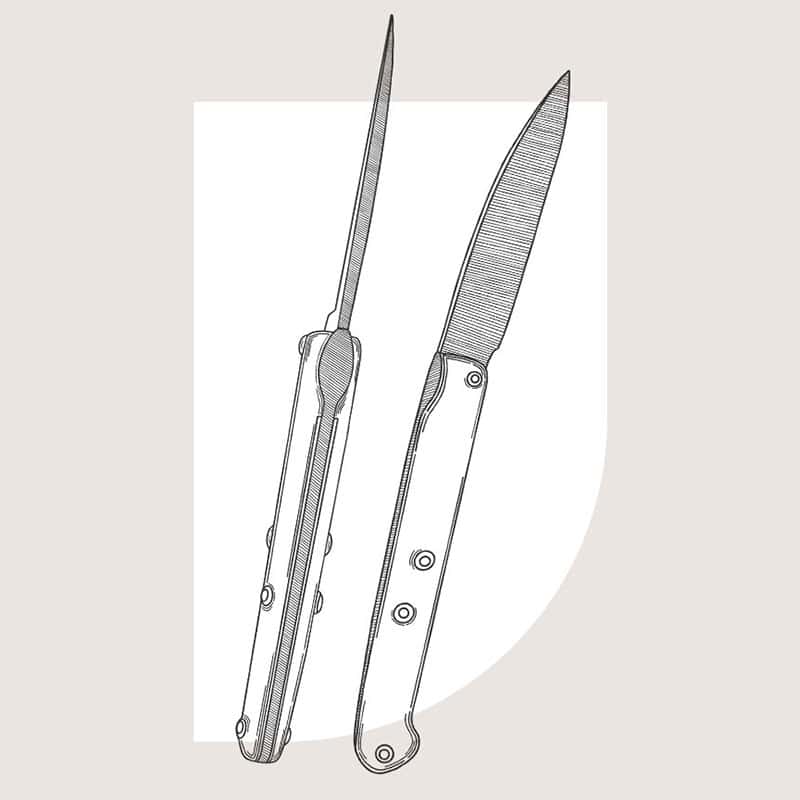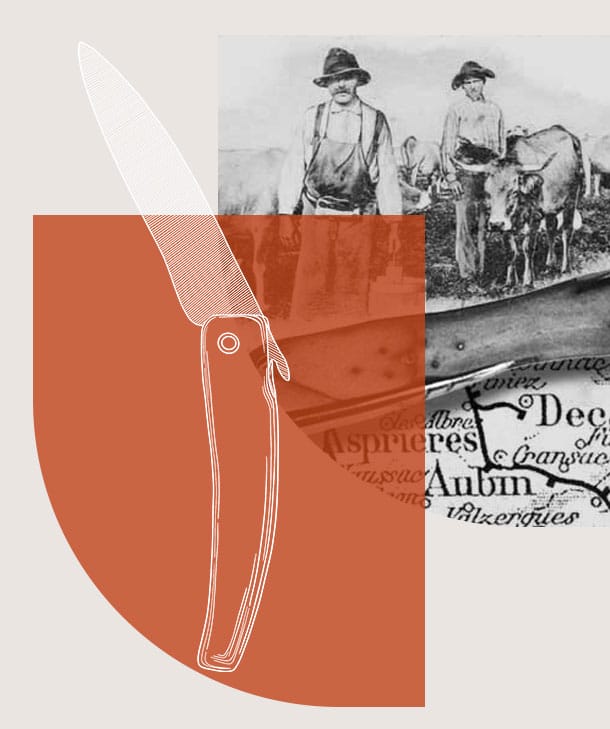
The Laguiole knife
The most famous knife in France
In the early 1800s, a humble peasant knife was born in Laguiole, a small mountain village in North Aveyron. Its famous bee, a symbol of prestige and quality adorning its spring, would make it the most famous knife in France.
ONCE UPON A TIME THE LAGUIOLE
At the beginning of the 19th century, the Laguiole was crafted in its simplest form, earning it the name ‘Laguiole Droit’ (straight Laguiole).
It replaced the ‘eustaches’ or ‘Jambettes Stéphanoisese’, manufactured in Espalion and sold to the Aubrac farmers.
‘EUSTACHE’ or ‘JAMBETTE STÉPHANOISE’
These knives had a sharp blade but no device to hold it other than with one’s own hand. At the lower end of the blade, we can observe a small T-shaped protrusion called a ‘lens’ that was pressed against the handle during the cutting action. However, there was nothing to secure the blade once closed, which could lead to serious injuries. In this context, the Laguiole Droit emerges as the first spring-assisted knife manufactured in the historical region of the Laguiole knife.

'bourbonnaise' blade
fly
spring
Corbin beak tail

LAGUIOLE DROIT
The main feature of the Laguiole Droit is its opening and closing system, known as the “lockback” or “back-lock”. At the front of the spring, just before the blade, we can notice a metal stud called the ‘fly’, a technical term specific to cutlery terminology. To disengage the lock and release the blade, the ‘fly’ had to be lifted with the fingers of one hand. The blade could then rotate to close the knife.
The Laguiole Droit is recognizable by the alignment of the blade and the handle, giving it a straight silhouette. Its design is enhanced by two special features on both sides of the knife: a ‘corbin beak tail’ at the end of the handle and the rounded profile of the ‘Bourbonnaise’ blade, whose parallel back and edge meet at a central point.

Lame bourbonnaise
Mouche
Ressort
Bec de corbin
THE LAGUIOLE, A KNIFE WITH UNIQUE FEATURES
The Laguiole knife as we know it today appeared in the middle of the 19th century, in 1850. Craftsmen successfully enhanced this knife by transforming its architecture.


1800
Creation of the Laguiole Droit
The current Laguiole knife traces its origins back to the Laguiole Droit, which first appeared in the early 1800s. It was the first folding knife to feature a lockback system, crafted in the historic Laguiole knife area. This locking system allows the blade to be held against the handle, ensuring that the knife can be carried without the risk of cuts.

1830-1840
Addition of the awl on the Laguiole
The awl is a long, pointed piece of steel located at the back nail of the knife handle. In the past, Aubrac peasants used it to puncture the stomachs of cows due to meteorization. The consumption of young grass and clover can lead to unusual swelling of the stomach, compressing the lungs and preventing the cow from breathing. Alternatively, the awl was also used as a small DIY tool, for example, to make an additional hole in a belt.

1850
Creation of the Laguiole knife with the Yatagan blade
The design of today's Laguiole knife was perfected in the mid-19th century. The ‘Bourbonnaise’ blade of the Laguiole Droit has been replaced by the more tapered ‘Yatagan’ blade. The knife handle adopts a wavy design with graceful curves, enhancing both its elegance and ergonomic qualities.

1870
Progressive replacement of the lockback system with a forced notch
In a forced notch locking system, the notch is no longer rectangular but slightly inclined, allowing the blade to be released simply by applying pressure to rotate it while holding the handle.

1880
Addition of the corkscrew on the Laguiole
The appearance of the corkscrew on the Laguiole knife went hand in hand with the development of bottled wine sales. The knife has evolved in response to new uses. The Laguiole with a corkscrew was also widely used by the Aveyronnais in the capital. Formerly bougnats (wood and coal deliverymen), many Aveyronnais later became managers of breweries in Paris and could proudly display their Laguiole knife while opening a good bottle of wine.

1908 – 1909
The bee becomes the emblem of the Laguiole knife
The first Laguiole knives used by the Aubrac farmers had no decoration and their fly was completely smooth, in the shape of a small oval. From 1880 onwards, with the rise of the Parisian "bistocracy" by the Aveyronnais, the Laguiole knife became "bourgeois". At that time, the first decorated flies appeared with floral or geometric patterns. The famous bee made its appearance in 1908-1909 and became the distinguishing mark of the Laguiole knife, known internationally.

